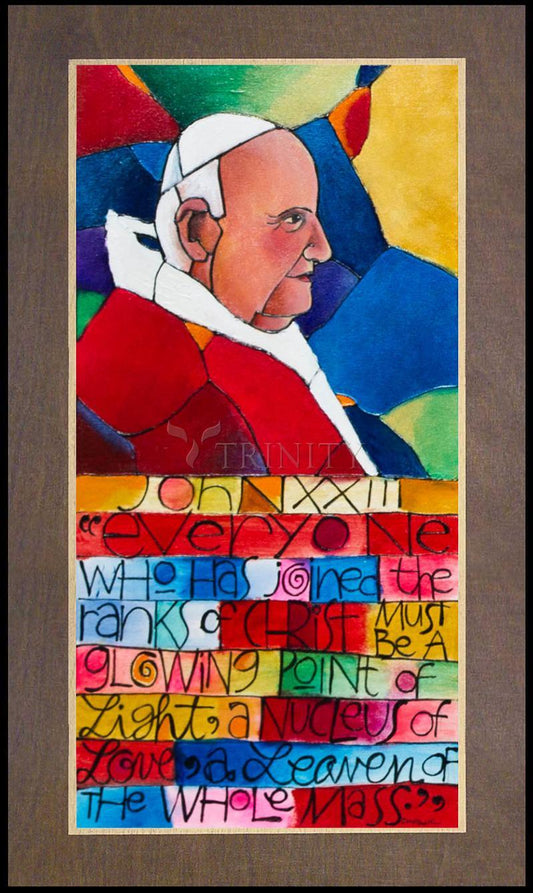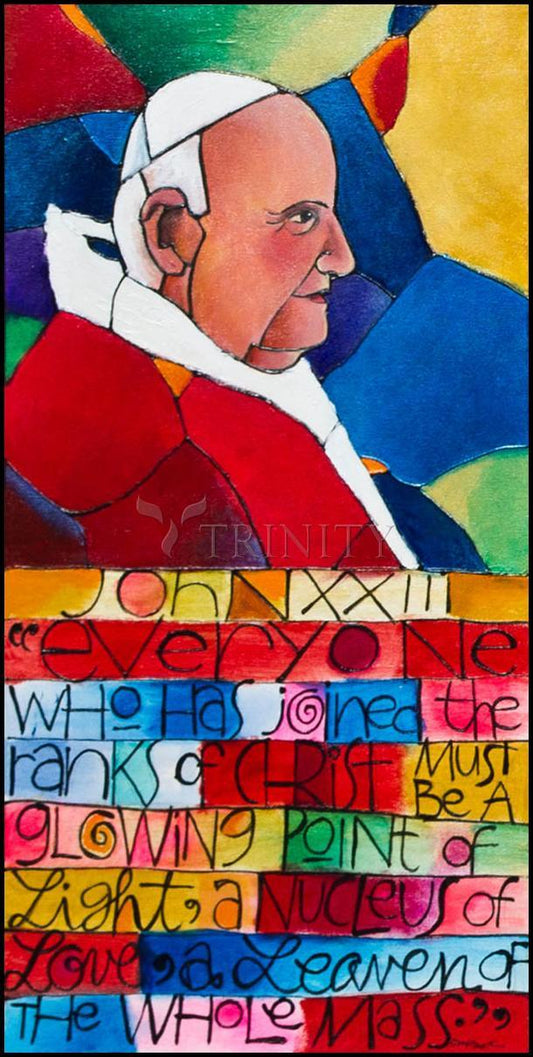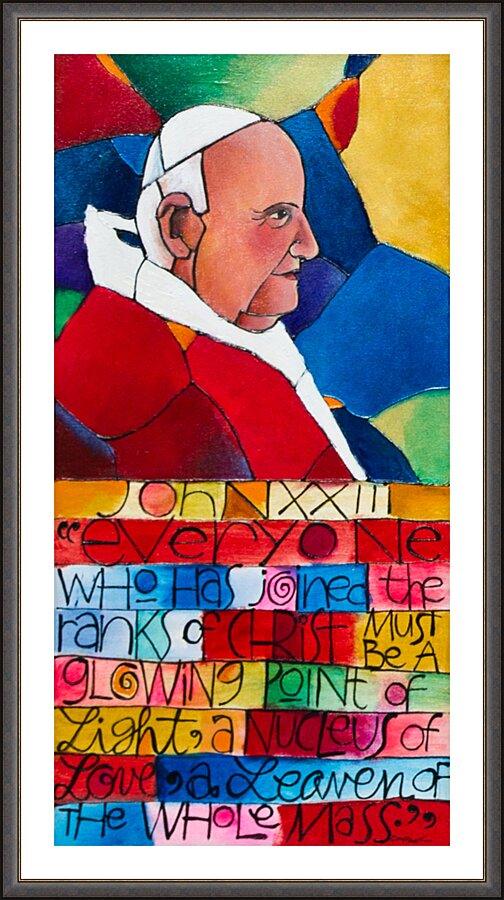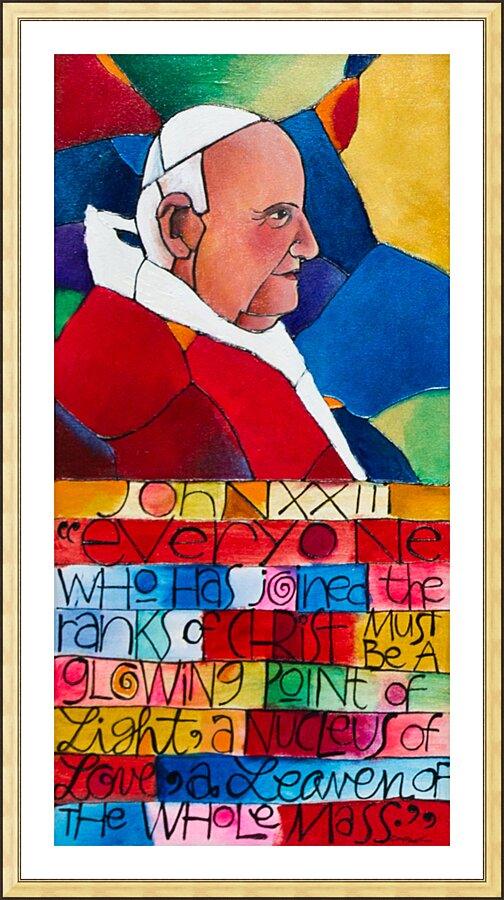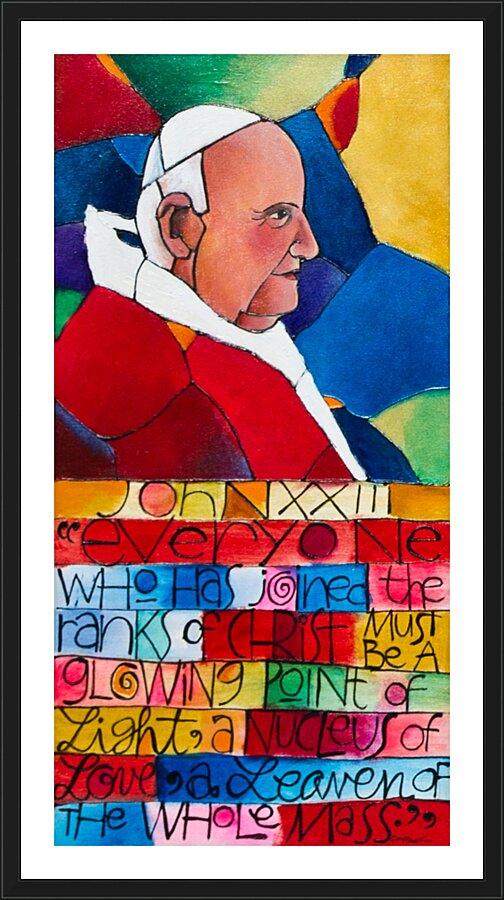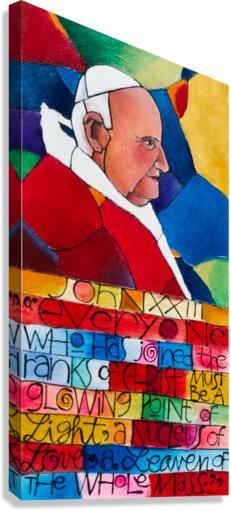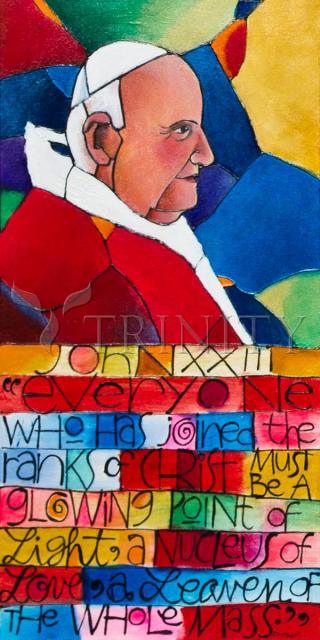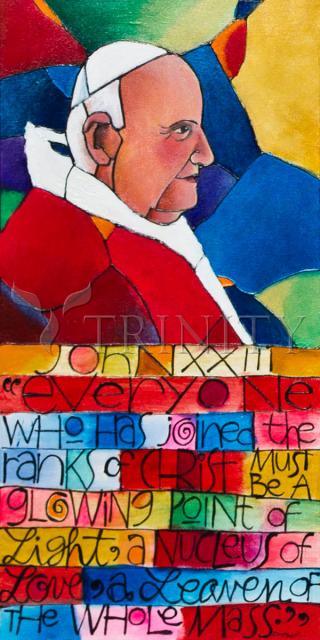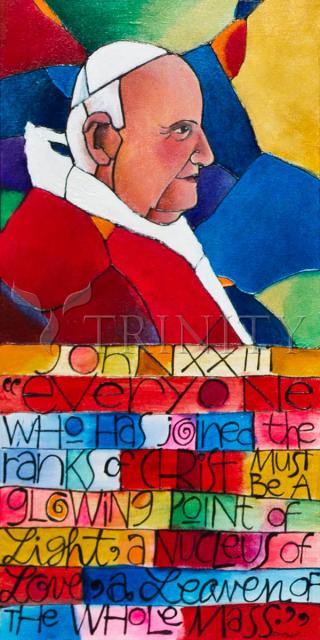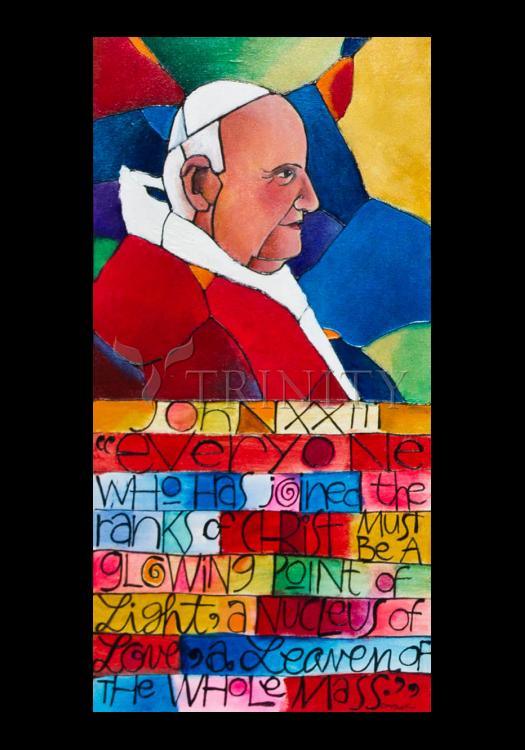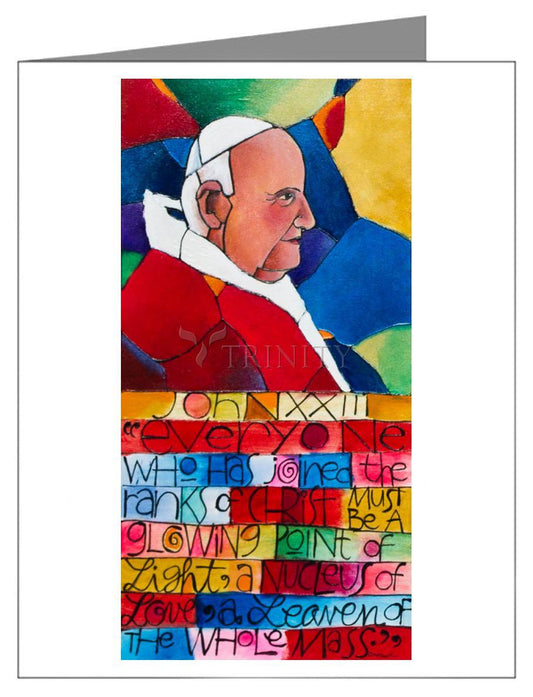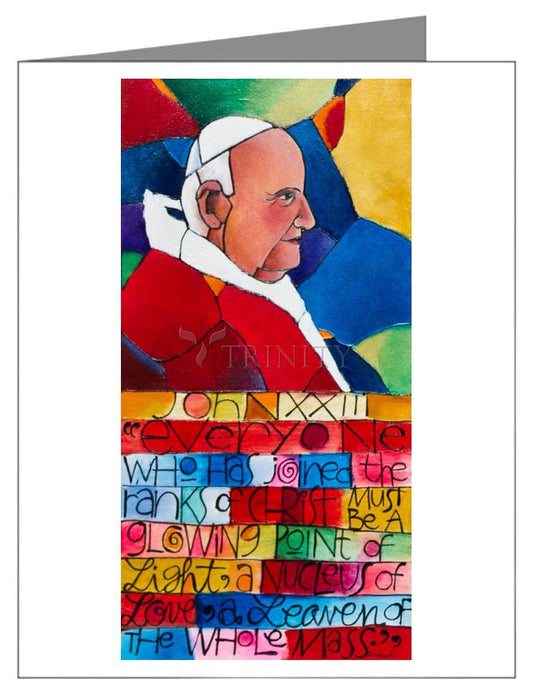Blessed John XXIII was the 260th successor of St. Peter, serving as pope from October 1958 to June 1963. He is best known for convening the Second Vatican Council.
1881: Nov. 25, born Angelo Giuseppe Roncalli, the fourth in a family of 13 children to Giovanni Battista and Marianna Giulia Roncalli, a family of sharecroppers in Sotto il Monte, Italy.
1892: Enters the seminary at Bergamo.
1901: In Rome to further his studies, he takes a year off for military service.
1904: Aug. 10, is ordained a priest and serves as secretary to the bishop of Bergamo.
1905: Begins teaching history and patristics (the lives and teachings of the church fathers) at Bergamo seminary.
1915: Is called back to military service; serves as medic and chaplain during World War I.
1918: Opens a hostel for students in Bergamo.
1921: Is called to Rome as the head of the Italian national office of the Society for the Propagation of the Faith.
1925: Is named archbishop and appointed apostolic visitator to Bulgaria, where he works closely with Eastern Catholics.
1934: Transfers to Istanbul, where he serves as apostolic delegate to Turkey and Greece, improving relations with the Orthodox and Muslims.
1939-44: During World War II, he helps many Jews to escape Nazi persecution by issuing "transit visas" from the apostolic delegation and coordinating rescue plans with other ambassadors.
1944: Is named nuncio to Paris.
1953: Is named a cardinal and patriarch of Venice.
1958: Is called to Rome for a conclave; is elected Oct. 28 and takes the name John XXIII. At age 76, he is the oldest pope to be elected in more than 200 years.
1960: Presides over the Rome diocese's first synod.
1961: Issues "Mater et Magistra" ("Mother and Teacher"), an encyclical on social issues that emphasizes the obligations of nations and individuals to bring about social justice. He creates the Secretariat for Promoting Christian Unity to lead the church into a new era of ecumenical relations.
1962: Oct. 11, opens the first session of the Second Vatican Council, which set in motion major reforms of the church, its structure, liturgy and relations with other Christians and other religions.
1963: At the height of the Cold War, he releases his second social encyclical, "Pacem in Terris" ("Peace on Earth"), teaching that true peace must be built on the pillars of truth, justice, love and freedom.
1963: June 3, dies of cancer.
2000: Sept. 3, beatified by Blessed John Paul II.



